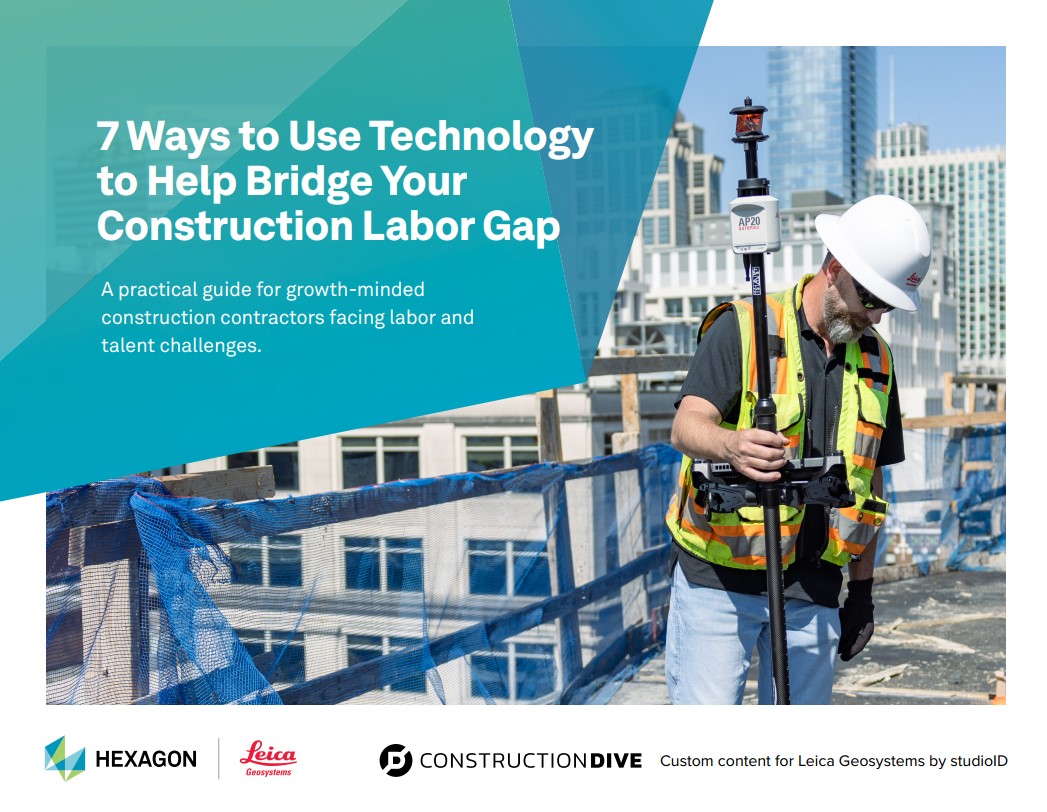Most general contractors and subcontractors in building construction recognize the advantages technological innovation has provided the industry in a broad sense. But when it comes to making technology investments for your firm, you’re likely to be cautious. Questions about cost, complexity, and the need for new solutions are top of mind when evaluating technology such as laser scanning and robotic systems.
But beware: Some of the most common hang-ups are actually based on incorrect information. Here are three common misconceptions that can prevent you from realizing the significant benefits technology can bring to your business.
Misconception 1: Technology Costs Too Much
Many companies, especially those on tight budgets, assume technology is too expensive. But the advent of affordable tech options that can streamline operations and improve accuracy means companies can often recoup their initial investment quickly while offering a superior service to clients.
“Companies think it’s cost prohibitive to employ some of these technologies,” says Ted Moberg, reality capture specialist for Leica Geosystems. “They continue to rely on their tape measure, digital camera, and plumb bob as standard tools. Those do work, but they’re incredibly time consuming compared to robotic total stations and laser scanners, and the risk of costly rework with the traditional tools is substantial.”
Tom Trotter, a line and grade manager for Baker Concrete Construction, adds, “Why upgrade to a new and better system that you need to pay for? Because in the long run it’s way quicker and you’re making fewer mistakes.”
Technology will be an investment, but the time you can save using laser scanning and robotic total stations instead of traditional measuring tools offers a clear return on investment.
Misconception 2: Technology Takes Too Much Time to Learn
There’s a common belief that adopting new technology is intimidating and requires specialized knowledge to operate. Even experienced workers can be reluctant to operate new equipment due to intimidation.
But technological advancements have made many high-tech tools user-friendly. For example, robotic total stations once required a trained surveyor to operate; now, systems like iCON offer such simple workflows that just about anyone in the field can harness the higher accuracy and productivity of the technology with minimal training. Likewise, laser scanners now have easy push-button operation and automated data management routines that can be implemented quickly, regardless of experience level.
Moberg explains, “We’ve democratized it to the point where it requires little to no training. Someone who initially doesn’t know anything other than how to use a tape measure can quickly get accurate measurements with today’s technology.”

RELATED: Discover how to use technology to bridge your labor gap. GET THE PLAYBOOK >
Misconception 3: Technology Isn't Worth Changing Our Workflows
Many construction businesses are hesitant to invest in new technology because they worry about difficulties integrating it into their existing workflow. But this often stems from not fully understanding the potential applications and benefits of the technology, or the ease with which training on the appropriate hardware/software systems can occur.
Nate Bush, a building construction sales engineer for Leica Geosystems, has over 27 years of experience in concrete construction at Baker Concrete Construction. “At Baker, we started scanning and quickly realized that we were saving a lot of time compared to taking individual shots,” he says. “We were collecting all that information in a matter of minutes, and then going back to the office and spitting out deliverables.
“Many companies don’t understand the streamlined workflow they can get out of this technology,” he adds. “They aren’t sitting down and taking a deep dive into the benefits it could offer.”

The Truth: Technology Provides a Competitive Advantage
While technology adoption in the building construction industry can seem daunting, many common fears are based on misconceptions. Once you understand that technology can be affordable, user-friendly, and highly beneficial to your operations, you can overcome your initial reservations and start leveraging these tools to improve efficiency, reduce errors, and boost your bottom line.
Contact us today to explore technology that can benefit your building construction team.






